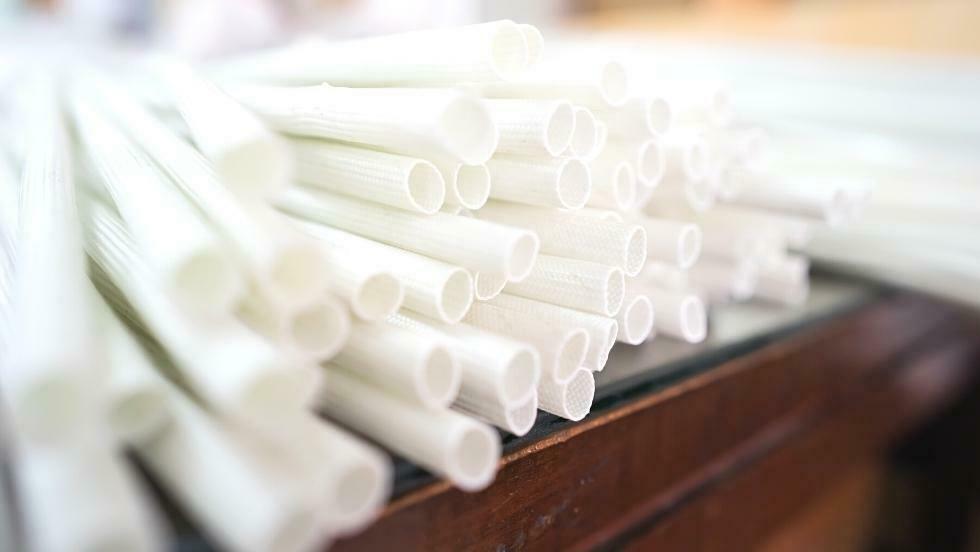Manufacturing often utilizes kaolin as one of its elements, either as a filler or an additive. People may wonder why the application of kaolin is increasing and expanding to a larger area of industry, including fiberglass, a lightweight and strong material used to make automotive body parts, water tanks, roofs, pipelines, and others.
Let us see the underlying reasons for utilizing kaolin in fiberglass as the latest manufacturing trend.
1. Alternatives to Unreachable Materials

In the last few years, the usage of kaolin as a raw material in fiberglass production has increased dramatically. The increasing use of fiberglass is due to the restrictions on the use of asbestos, a naturally occurring mineral comprised primarily of thin fibers that are considered a hazard because of their carcinogenicity. Because of that, people are looking for a substitute for asbestos, and here is where fiberglass emerged.
Not only that, but the usage of kaolin, mainly as a filler, occurs due to one of the most expensive materials in fiberglass manufacturing. This resin is originally combined with fiberglass. The kaolin provides silica and alumina, which are required in the fiberglass composition to make it strong and durable.
2. Provides More Flexibility
One of the characteristics of fiberglass is the flexibility that is produced by the process by which fiberglass is created. This flexibility is the reason why people use fiberglass in various household products and industries. Kaolin can support that because kaolin is a natural soft mineral that is also flexible and has a plastic nature, so fiberglass will have the right amount of flexibility. Fiberglass can also be formed into any shape, and kaolin has the same ability, which makes kaolin perfect for fiberglass manufacturing.
3. Increase the Strength

A number of natural minerals and synthetic chemicals serve as the basic raw materials for fiberglass manufacturing. One of the ingredients is kaolin. Kaolin can increase the strength of the products due to its chemical characteristics. It can also make fiberglass more durable.
4. Fire Resistant
When heated to roughly 1000 F, kaolin stays chemically stable until it begins to dehydroxylate and lose water. This technique is usually not harmful to the product. Dehydroxylation is complete around 1700 F, and the fiberglass dissolves and combines with the kaolin to generate a significantly higher melting glass. The sequential release of water and the fusion of fiberglass and kaolin allows the product to retain its shape, making this usage of kaolin in fiberglass one of the ultimate fire-resistant materials.
5. Help the Making Process

Kaolin has a natural abundance, high purity, and significant advantages such as decreased organic matter, which stabilizes the wire drawing atmosphere. That’s essential in fiberglass production, making the drawing process more stable in the fiberglass manufacturing process and wire drawing evenly.
6. Friendly to Environment
Kaolin is a naturally occurring raw material that is created from natural processes. Kaolin is an essential natural resource in the industrial industry due to its unique chemical and physical properties. Many studies have shown that kaolin is environmentally beneficial if fine particle dust levels are kept low.
In addition, many studies have tested that kaolin is generally a non-toxic raw material. The waste of manufacturing that involves kaolin will not harm the surrounding ecosystem as long as the waste management is controlled.
7. Affordable Cost
Compared to other minerals, kaolin is one of the most common minerals in the earth’s crust. It is widely mined in most countries, including Indonesia. The ease of getting kaolin makes the price low and stable. This is why kaolin is considered a more affordable material for any industry, including the fiberglass industry.
However, even though kaolin is affordable, it does not make the quality of the product goes low. Kaolin can maintain the quality of the products because of its suitable characteristics for supporting fiberglass quality while still being economically low.
That is why the utilization of kaolin in fiberglass has been increasing lately. Kaolin is a good material suitable for any kind of industry, especially for those that crave the best mineral material that can support the manufacturing of good quality fiberglass at a low cost and is friendly to the environment.


Recent Comments